All About Gypsum Plaster | What Is Gypsum Plaster | 15 Advantage of Gypsum Plaster | Disadvantage of Gypsum Plaster
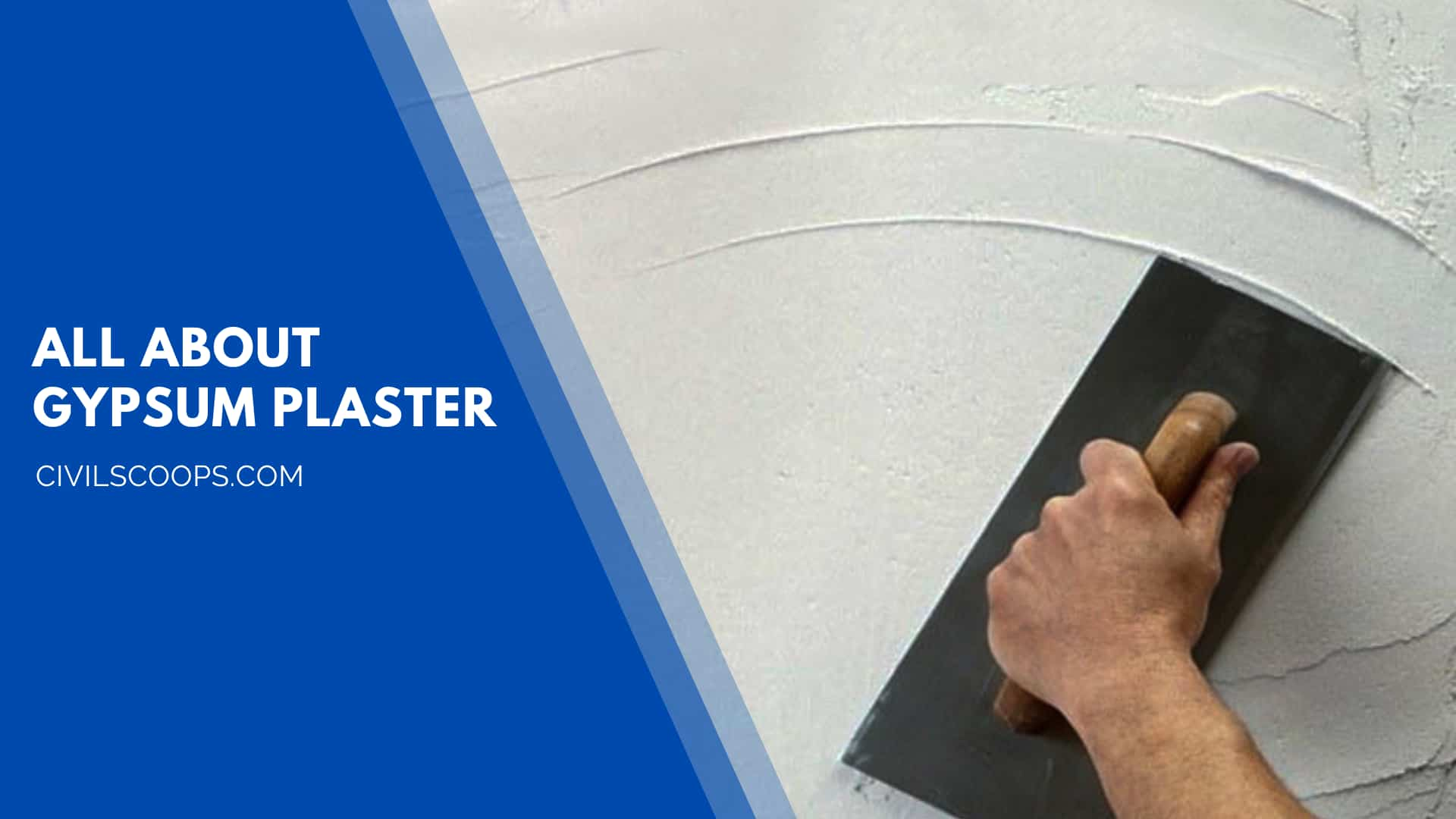
Table of Contents
History of Gypsum Plaster

Gypsum plaster has been used as an interior wall and ceiling finish for thousands of years throughout the world.
You may be surprised to learn that gypsum plaster was used to finish the interior walls of the massive pyramids of Giza in Egypt built around 2,500 BC, 4,500 years ago.
In more recent history, gypsum plaster has been used to finish the interior walls of many new homes built in both the United States and Canada, where it was applied by hand over wood lath.
Slowly but surely, however, this type of gypsum plaster application has been replaced by drywall with gypsum texturing, a less labor-intensive method.
Although drywall is made from gypsum, a wall built from drywall and texturized with gypsum is radically different from a wall with gypsum plaster over lath.
Today, drywall has gained in popularity and has virtually eliminated gypsum wall plaster.
Nonetheless, gypsum is the main component of the joint compound used for drywall construction and is sometimes applied as a skim coat over wallboard.
Today, a number of straw bale builders in the United States, Canada, and Australia are finishing interior walls with gypsum plaster.
As you will soon see, gypsum can be applied directly to straw bales or over an earthen base coat on straw bale walls.
Gypsum plaster can also be applied to earthen walls, such as adobe and cob, either directly or over an earthen plaster base coat for interior applications.
What Is Gypsum Plaster?
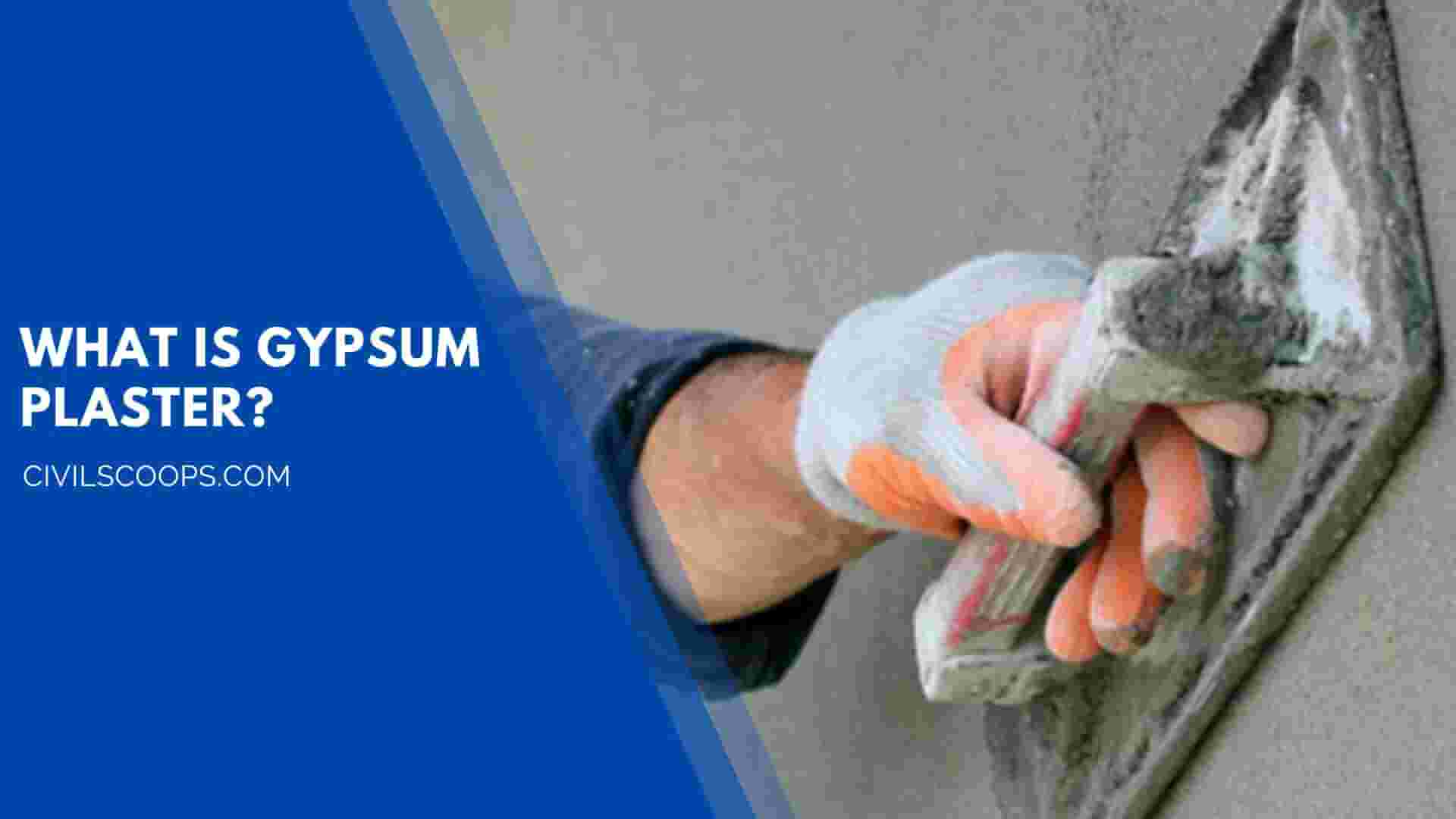
Gypsum is a naturally occurring water-soluble mineral known by chemists as hydrous calcium sulfate, which is found frequently as well-formed crystals.
Some of these can be very large: single crystals with a diameter of six feet have been unearthed in Naica, Mexico.
Widely distributed throughout the Earth’s surface, gypsum is found in rather thick deposits among layers of shale and limestone and under salt deposits in the Earth’s crust that were formed as ancient seas evaporated.
In addition, gypsum is found in volcanic areas and in veins of metallic ores.
Gypsum plaster is made by heating gypsum at low temperatures to drive off water, to produce plaster of Paris a chalky, fast-setting material commonly used for molds and for casts to repair broken bones.
It can be mixed with time to form a fast-drying interior finish plaster known as gauging plaster, according to Bob Campbell, a 17-year plasterer who began work in Scotland.
Lime and gauging plaster, he tells us, aren’t very popular anymore.
If gypsum is heated at higher temperatures, the resulting product is anhydrous calcium sulfate.
This substance is most commonly used to manufacture drywall and drywall compounds. It is also used as an interior plaster.
Natural gypsum is by far the best plaster on the market. However, in its pure form, it may be difficult to locate.
Gypsum plaster is manufactured by several large companies Red Top, Structolite, Durabond, and Sheetrock 90 are common brand names.
Gypsum plaster is available in two forms: wet (in buckets) and dry or powdered form (in bags).
Neither option contains sand, as sand is not commonly added to gypsum plaster at least not in North America. In Australia, however, Gary Dorn and his colleagues routinely add sand to gypsum plaster.
Advantage of Gypsum Plaster
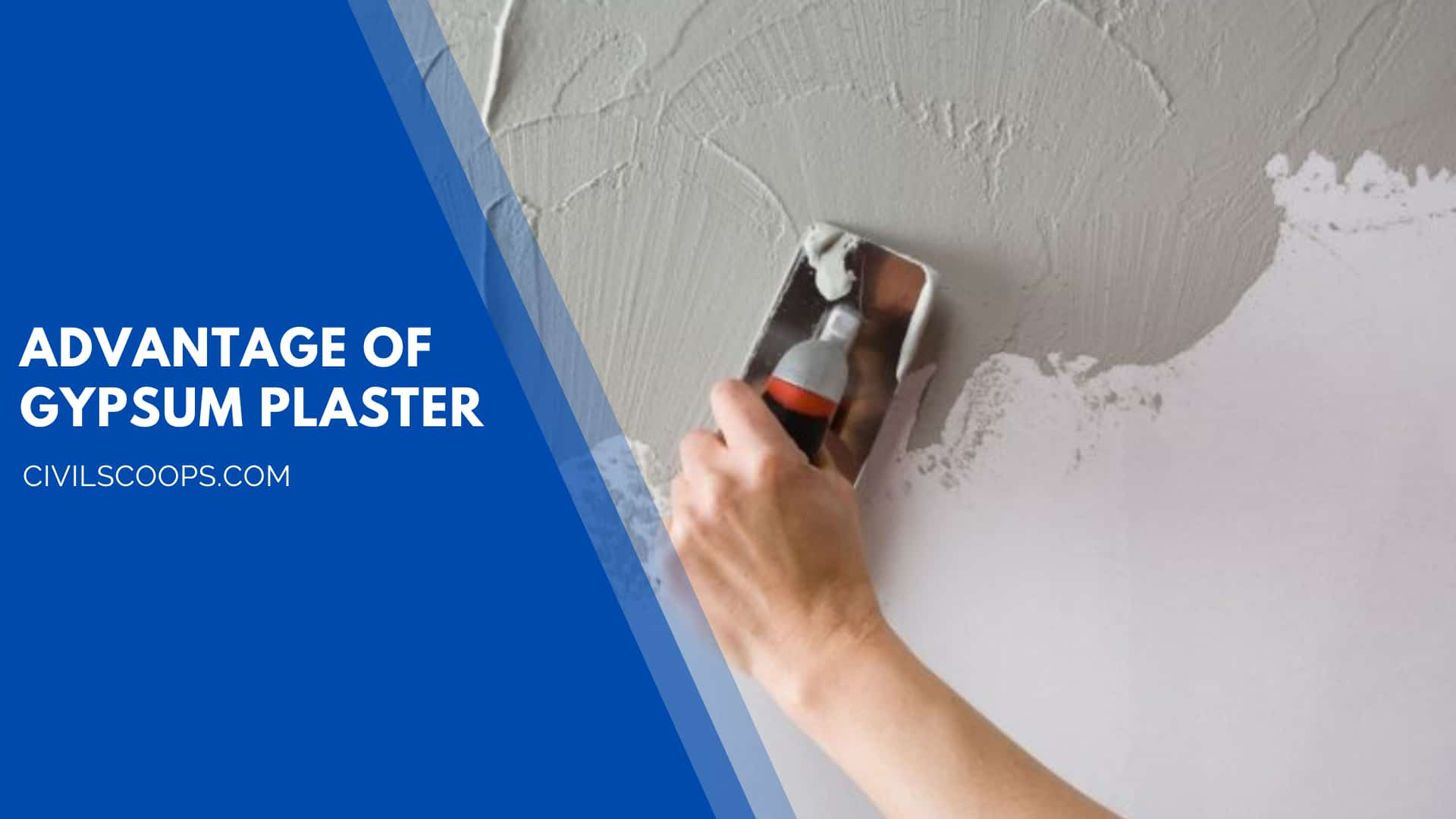
1. No Shrinkage Cracks in Gypsum Plaster
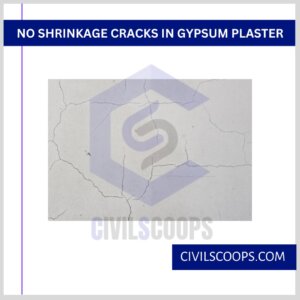
- The gypsum reaction produces less heat as compared to the cement reaction with water.
- So there are fewer Shrinkage cracks in gypsum plaster as compared to traditional cement plaster.
2. Gypsum Plaster Is a High Performance
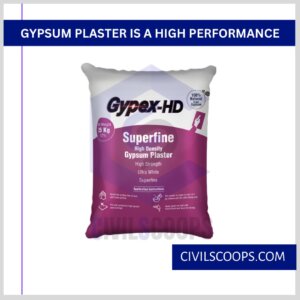
- Excellent high strength after drying, durable and light-weight
3. Gypsum Plaster Offers Better Acoustics
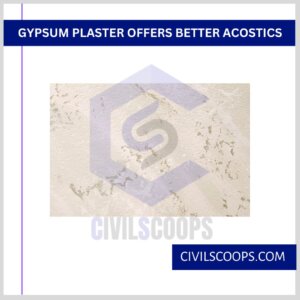
- This is because the Sound Absorption index of Gypsum is high, and mostly the soundproof rooms use walls sandwiched with Gypsum boards, in order to reduce the outside sound and improve acoustics.
- Gypsum covering on walls offers better acoustics in your home, which means lesser echo in the room and lesser intervention of outside sounds.
4. Gypsum Plaster Incurs Low Water Usage
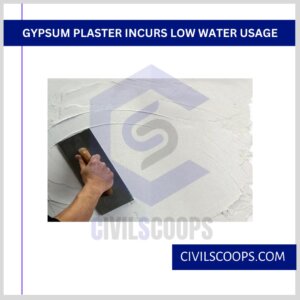
- Gypsum, however, does not require treating with water and therefore saves a lot of water along with time.
It is extremely important to reduce water consumption. - Gypsum plastering uses less water, and hence is an ideal choice for arid regions, and otherwise too.
5. Gypsum Plaster Saves Construction Time
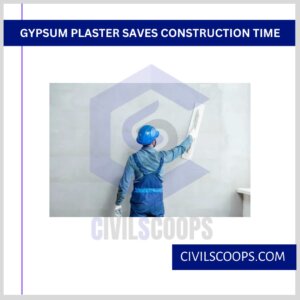
- Gypsum plastering does not have this long waiting period. Gypsum plaster dries and settles in 3 days, and hence the construction pace is faster.
- The construction time is saved manifold if the building is multistory.
- In conventional sand cement plaster, one would have to wait for 21 days for each floor, whereas it will be just 3 days in case of gypsum plastering.
- Gypsum plaster does save a lot of construction time.
Also Read: All About Plaster | What Is Plaster | Requirement of Good Plaster | Types of Plasters
6. Lighter construction with Gypsum Plaster
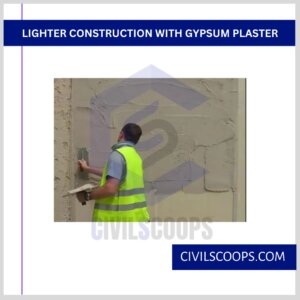
- Gypsum is very light in weight in contrast to sand cement plaster, and thus offers more strength when used in false ceilings and other cantilever designs.
- Lesser weight on the frames makes them more robust and long-lasting and gives better protection even in case of natural hazards like earthquakes.
7. In the Gypsum Plaster Not Required Curing
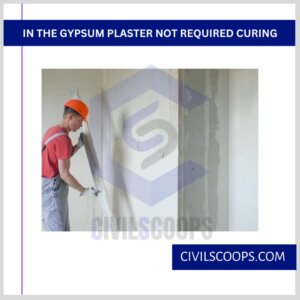
- Gypsum plaster doesn’t need any curing saving water and time during construction.
8. Gypsum Plaster Offers Ease of Application
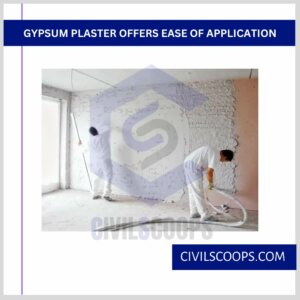
- Gypsum can be directly applied over brick and also block work without separate finishing.
- It is also very easy to apply and level gypsum plaster.
- Gypsum Plaster is also fire resistant plaster
- Gypsum is fire-resistant, non-combustible since it has a lot of water in it, and safe material to coat the inside walls of your home.
9. Better Heat Insulation with Gypsum Plaster
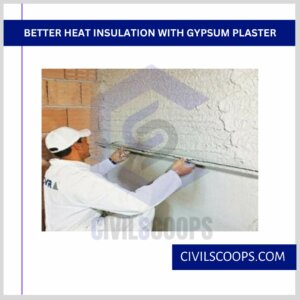
- Gypsum plaster offers good insulation from heat, which means saving of electricity in maintaining the temperature of the room.
- Gypsum plaster offers better heat insulation than conventional plastering methods.
10. Gypsum Plaster Easily Gain a Smooth Finish
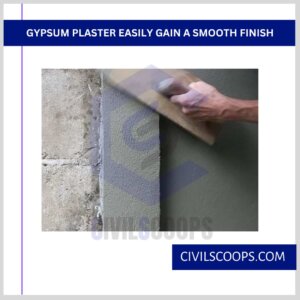
- Perfectly lined, leveled, smooth walls, and perfect right-angled corners.
11. Gypsum Plaster Look Like a Decorative Application
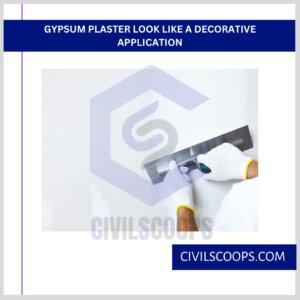
- It can be easily applied to decorative purposes also and can be molded into different shapes.
12. Readily Available Raw Materials for Gypsum Plaster
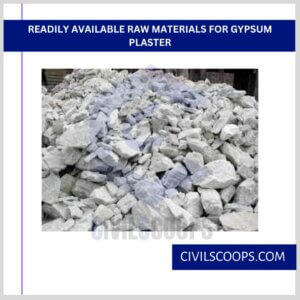
- Gypsum is readily available material.
- Natural Sand, which is a raw material used in traditional cement plaster, is hard to obtain.
- It is also banned in multiple states in India.
13. Gypsum Plaster Productivity High Than Normal Plaster
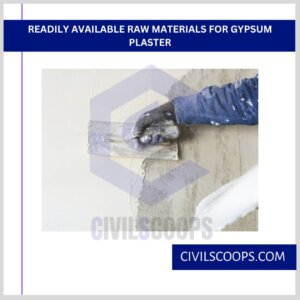
- Reduces time considerably when compared to conventional cement plaster.
14. Gypsum Plaster Has a Lower Impact on the Environment
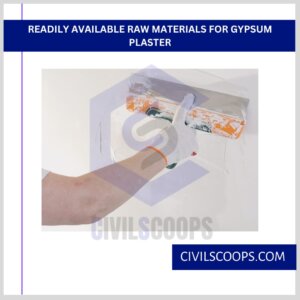
- Gypsum is a naturally occurring substance, that is deposited in lakes and seawater, and is also found in thick and wide beds along with sedimentary rocks.
- Since it is constantly deposited by the lake and seawater, Gypsum does have the chance of depletion, and since it is a naturally occurring substance, it is environment friendly.
- Gypsum can also be synthesized artificially and Gypsum finds use in many other industries like medicine, fertilizers, agriculture, etc.
- The sand required for the sand cement plaster comes from river beds, and that is not a very sustainable model from an environmental perspective.
- It is a safe substance that does not have any major health hazards.
15. Quick Setting Time of Gypsum Plaster Than Normal Plaster
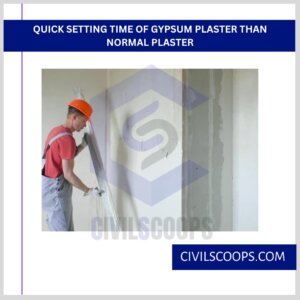
- Gypsum sets normally set 25 to 30 mins.
- So painting could be started 72 hours after the application of gypsum plaster.
- The plaster has to be dried up before painting.
Also Read: Difference Between Cement Plaster and Gypsum Plaster
Disadvantage of Gypsum Plaster
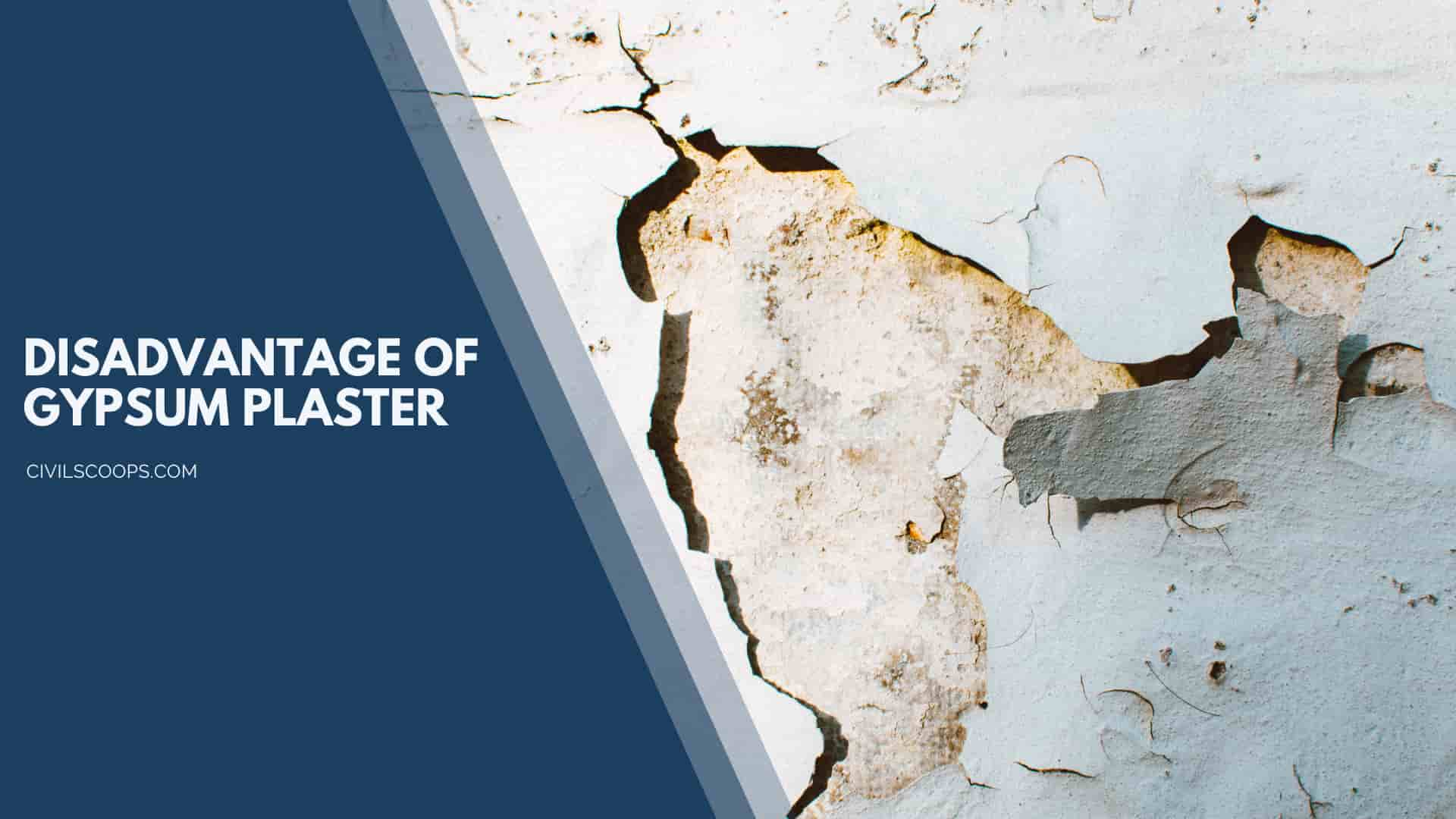
- Gypsum plaster is not recommended for use in areas subject to weather, moisture, or high humidity.
- Gypsum plastering cannot be done in areas that are continuously damp such as a bathroom, etc.,
- Gypsum plaster is costlier than traditional cement mortar plaster.
- For the same thickness, gypsum plaster is costlier than cement plaster. But in areas where river sand is difficult to procure, gypsum plaster would be economical.
- Primers containing polyvinyl acetate are unsuitable for use on finish-coat plasters that contain lime; the bond between the primers and plasters may fail and cause the prime coat and subsequent finish coats to delaminate from surfaces due to the alkalinity of the plaster.
[su_box title=”FAQ” style=”default” box_color=”#333333″ title_color=”#FFFFFF” radius=”3″ class=”” id=””]
What Is Gypsum Plaster?
Gypsum plaster, white cementing material made by partial or complete dehydration of the mineral gypsum, commonly with special retarders or hardeners added. Applied in a plastic state (with water), it sets and hardens by chemical recombination of the gypsum with water.
Gypsum Ceiling Thickness
1/2”
1/2” is the most common thickness of gypsum board false ceilings and is used in the majority of residential buildings.
Gypsum Plastering Disadvantages
Disadvantages
- It doesn’t perform well against water. We cannot use gypsum plaster for outer walls.
- Costly. If you compare cement plaster to gypsum plaster, the latter is costlier for the same thickness level in most conditions.
- Low shelf life. Gypsum, as a material, comes with a limited shelf life.
Why Is Gypsum Called Plaster of Paris?
The name Plaster of Paris (POP) had its origins from the fact that it was extensively mined from Montmartre in Paris district. But its use predates the industrial revolution, they have been found on the insides of pyramids.
Gypsum Plaster Walls
In gypsum plaster, readymade POP powder is mixed with water and applied directly on the wall. Gypsum Plaster can be applied directly on any brick, solid or hollow blocks, AAC blocks and plaster boards. Gypsum plaster has good insulation properties, fire resistant and impact resistant.
Gypsum Plaster Vs Cement Plaster
Unlike cement plaster, gypsum plaster does not require punning or any special process to achieve smoothness on the surface. Thus, it saves costs and time. Cement plaster has to be prepared manually but gypsum plaster is available in ready form. Hence, preparing it is much easier and convenient.
Lime Gypsum Plaster
Gypsum lime plaster
Lime and gypsum are obviously different materials with different properties. Lime sets slowly by absorbing carbon dioxide from the air, whereas gypsum plaster sets rapidly by crystallising (even fully hydrated gypsum plaster sets within about a day).
Types of Plaster Board
8 Types Of Plasterboard To Use In Your Home
- Insulated Plasterboard.
- Moisture-Resistant Plasterboard.
- Acoustic Plasterboard.
- Flexible Plasterboard.
- Impact-Resistant Plasterboard.
- Fire-Resistant Plasterboard.
- Foil-Backed Plasterboard.
- 4-in-1 Plasterboard.
Uses of Gypsum Plaster
Gypsum Plaster can be applied directly on any brick, solid or hollow blocks, AAC blocks and plaster boards. Gypsum plaster has good insulation properties, fire resistant and impact resistant. Also, gypsum saves a lot of time during construction and has superior finish.
Plaster and Gypsum
Gypsum plaster
Gypsum is a naturally occurring soft sulfate mineral whereas plaster of Paris is a building material that we use for protective or decorative coating purposes. Both these materials contain calcium sulfate as the major constituent.
Gypsum Board
Drywall is a panel made of calcium sulfate dihydrate, with or without additives, typically extruded between thick sheets of facer and backer paper, used in the construction of interior walls and ceilings.
Gypsum Plastering Cost
Gypsum plaster costs around $10 to $11 per square foot. It’s made with gypsum, which is a soft sulfate mineral. Often, people install a layer of gypsum plaster on top of cement plaster to give it a smooth finish for painting. You can apply it on brick, blocks, and plasterboards.
What Is Gypsum Plaster Used For?
Conventional gypsum basecoat plaster helps create durable, sound- and fire-resistant interior walls. Easily conforms to a variety of wall and ceiling designs.
Gypsum Plaster Application
Gypsum Plasters can be applied directly to brick walls, concrete blocks, or RCC surfaces.
- Gypsum Plasters usually come in ready mix bags.
- Check the thickness of plaster that needs to be applied on the wall.
- Apply Gypsum plaster to solid surface with firm pressure.
- As the plaster stiffens, carry out further flattening.
What Is Gypsum Plaster Made of?
gypsum plaster, white cementing material made by partial or complete dehydration of the mineral gypsum, commonly with special retarders or hardeners added. Applied in a plastic state (with water), it sets and hardens by chemical recombination of the gypsum with water.
What Is Gypsum Board Made Of?
Drywall (gypsum board) is used in North American construction as a faster alternative to plaster and wood. Drywall is made of gypsum (calcium sulfate dihydrate), paper, and additives such as mica, clay, and resin. Drywall installation generates gypsum and silica dust, which are irritating to the lungs.
What Is Gypsum Ceiling Made of?
Gypsum boards
As the name suggests, these are made of gypsum, a hydrated calcium sulphate, has the quality of withstanding for a long time. Gypsum boards, that come in a prefabricated form, are manufactured in a factory and assembled on the site using metal frames.
What Is Gypsum Board Made Out Of?
calcium sulfate dihydrate
Drywall (gypsum board) is used in North American construction as a faster alternative to plaster and wood. Drywall is made of gypsum (calcium sulfate dihydrate), paper, and additives such as mica, clay, and resin.
Gypsum Ceiling Cost Per Square Feet
Gypsum false ceiling price per sq. ft. ranges from ₹84 to ₹95 + GST.
What Is Gypsum Powder Used for?
Gypsum may be used as an anti-caking agent, dough-strengthener, drying agent, firming agent, stabilizer, color enhancer, and thickener. It is also used in baking as a dough conditioner for reducing stickiness, and also as a source of dietary calcium in baked-goods. It is also used in brewing mead.
What Is Gypsum Powder Made Of?
Initially, it is a white mineral rock that is processed into a dry powder. Natural gypsum contains Calcium, Sulfur, Oxygen, and Hydrogen. Gypsum powder is used primarily in building materials, such as drywall, but it is also used as a soil conditioner and fertilizer in agriculture.
Gypsum Vs Cement
Cement plaster gives a rough surface. Whereas gypsum plaster gives a very smooth finish which makes it compatible with paints. During the application of cement, plaster wastages are high. While during the application of gypsum plaster the wastage is nominal.
Gypsum Plaster Rate
Technical comparison between Cement Plaster and gypsum Plaster
| Parameters | Cement plaster | Gypsum plaster |
| Cost Per 100 Sq ft | Rs. 2,000/- Rs. 2600/-, If POP punning is done to prepare a smooth surface | Rs. 2,300/- |
Lime Plaster Vs Gypsum Plaster
Lime sets slowly by absorbing carbon dioxide from the air, whereas gypsum plaster sets rapidly by crystallising (even fully hydrated gypsum plaster sets within about a day). Also, as a lime plaster dries it shrinks slightly, while a gypsum plaster expands slightly as it sets.
What Is the Difference Between Plaster and Gypsum?
The primary difference between gypsum and Plaster of Paris is that calcium sulphate dihydrate is found in the gypsum, whereas calcium sulphate hemihydrates are contained in the Plaster of Paris. A naturally occurring mineral is gypsum. This is thus the biggest distinction between plaster of paris and gypsum.
Setting Time of Gypsum Plaster
Other research on local gypsum products showed that the average setting time of the self-made gypsums was around 8 minutes and 7 seconds and 3 minutes and 40 seconds. The study above also reported an average setting time of 20 minutes and 21 seconds for dental plaster and 10 minutes and 34 seconds for dental stone.
How to Dissolve Gypsum Plaster?
Gypsum slowly dissolves in running water.
Gypsum Board Company
Saint Gobain, Knauf Gips KG, Georgia-Pacific LLC, USG BORAL, Etex Group, and LafargeHolcim Ltd, among others, are the key players in the global gypsum board industry. As per the analysis by Expert Market Research, the global gypsum board market is estimated to grow in the forecast period of 2022-2027 at a CAGR of 5.3%.
Use of Gypsum in Cement
Gypsum is called the retarding agent of cement which is mainly used for regulating the setting time of cement and is an indispensable component. Without gypsum, cement clinker can condense immediately by mixing with water and release heat.
Gypsum Company
National Gypsum Company is a company based in Charlotte, North Carolina, that produces drywall gypsum boards in the US. It has 17 gypsum board plants in the US and presents itself as a fully integrated building products manufacturer. It is a private company, incorporated as New NGC, Inc. in 1993.
What Is Gypsum Powder?
Initially, it is a white mineral rock that is processed into a dry powder. Natural gypsum contains Calcium, Sulfur, Oxygen, and Hydrogen. Gypsum powder is used primarily in building materials, such as drywall, but it is also used as a soil conditioner and fertilizer in agriculture.
What Is the Difference Between Gypsum and Plaster of Paris?
The primary difference between gypsum and Plaster of Paris is that calcium sulphate dihydrate is found in the gypsum, whereas calcium sulphate hemihydrates are contained in the Plaster of Paris. A naturally occurring mineral is gypsum. This is thus the biggest distinction between plaster of paris and gypsum.
[/su_box]
[su_note note_color=”#F2F2F2 ” text_color=”#333333″ radius=”3″ class=”” id=””]
Like this post? Share it with your friends!
Suggested Read –
- All About Sand | What Is Sand | 29 Types of Sand | Composition of Sand
- 19 Different Types of Slabs in Construction | What Is a Slab | Types of Slabs
- All About M Sand | What Is M Sand | Properties of Manufactured Sand | Advantages & Disadvantages of Manufactured Sand
- All About Uscs | Which Test Gives a Better Estimation of the Friction Angle | Introduction of USCS ( Unified Soil Classification System )
- What Is Sewerage | What Is Storm Drain | Household Drain Systems | House Drainage Parts and Components | Types of Sewer Pipes | Sanitary Pipework
[/su_note]
Originally posted 2023-01-19 12:48:14.
